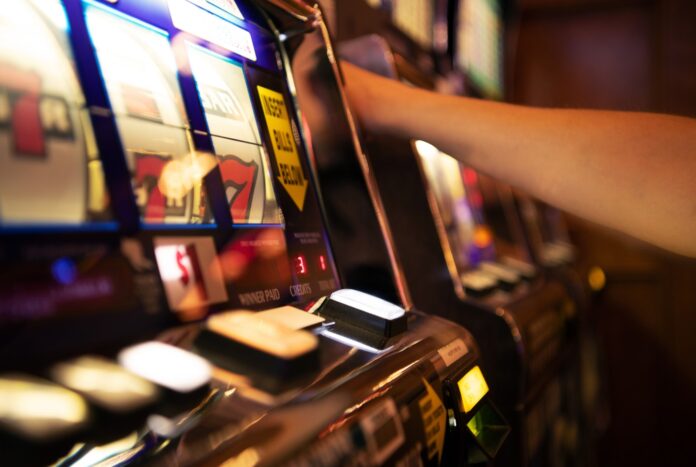You don’t have to be a mathematical genius to understand the basic differences between each slot game. Essentially, the games have a different propensity to pay prizes. Low volatility, a.k.a. low-risk or low-variance games tend to pay cash prizes more often, but they are smaller, on average, compared to games of high risk.
However, the games of high risk/variance/volatility tend to pay bigger prizes, and the extremely volatile progressive jackpot games of networks can pay prizes in the house of 8 figures. That is right! Mega Moolah, for example, is famous for having paid prizes bigger than £20m!
Medium-risk games stand between the extremes and won’t pay prizes as big as high volatility ones, but they will reward you with prizes, on average, more often than high risk games, and they tend to be bigger than classic games such the ones you can find in the 32Red online fruit machine collection or more modern fan-favourite slots like Starburst and it’s spin-offs.

The Numbers of a Slot Game
Risk, Variance and Volatility are synonyms and they’re a general category to describe the propensity of a game to pay prizes, and the expected ‘size’ of them.
There’s no rule such as a threshold, a number that determines whether a game is of low or high volatility.
We can say, in general, that low volatility games usually have a maximum prize, a.k.a. maximum payout of circa 5000 times the original stake size.
But some games will have payouts in this region and some reviewers of the slot’s community will call them medium volatility ones.
For that reason, it’s common to see games being called low to medium, or medium to high volatility.
However, there’s no question when it comes to the slots that can make you an instant millionaire: the community will use terms like high, ultra-high or extremely high risk. Progressive jackpots fall into this category.
The number of reels may appeal to the fans, but in general, that is a characteristic that doesn’t necessarily change the propensity to win. The odds, the paylines and the maximum payouts are defined by a complex equation in each game and developer.
Return to Player: An Important Number to Understand How Online Slots Work

A number that is more interesting to calculate potential rewards is the RTP, which stands for Return to Player. Lower volatility games tend to have higher RTPs, in the house of 94% to 98%, while progressive games can have numbers of around 88% to 92%.
The RTP is simple to understand: in the long run, if a house is offering a game with a 90% of RTP, it is taking a cut of 10% and it is rewarding the community with £9 out of every £10 that is gambled by spinning the reels. A common source of confusion to the fans is this: just because the RTP of a game is 88% or 98%, it doesn’t mean that you will get back exactly this amount of money back from the virtual machine.
Some players will win more than 100% of what they bet, which means they’ll profit, and some users won’t. That’s how any game of chance works, pretty much like a lottery, but more people will win as the odds are better than common lottery games that have odds in the house of 300 million to 1.
Understanding Paylines
The first 3×3 slot machine used to have one payline. The payline is a pattern on the reels that makes a combination a winning one.
So, a line of three lucky seven symbols, the 777 combination which is famous in the world of casinos, is an example of a winning combination.
But these days it’s not just the central, horizontal line that can pay you cash prizes. Some games will have hundreds of different paylines. The most common number of paylines is between 1 and 10, featuring the horizontal and vertical directions of each reel.
Some games will also allow you to adjust the number of active paylines. Naturally, as the number of paylines that are active increases the chances of winning in any given round, this means that an adjustment of the stake is necessary to include more active paylines in each round.
However, some games will also have fixed paylines. The number of paylines is not exactly related to the volatility of a game.
Coin Size and Stake Size
Some games will use the concept of coins, while others will only call it a stake. Both terms are used to describe how much you’re betting on each round. If you’re betting with a high volatility game, it may be wise to bet smaller amounts on many spins, as you can go for the big win without risking all your budget for the session in just one or a few bets.
Also, if you’re fond of games of low volatility, you’ll enjoy the amusing sensation of winning if you spread your budget across several small bets. The stake size starts usually around £0.10 and can be as high as £1,000 depending on the game and jurisdiction.
Sometimes the regulators impose a cap on stake size for slots, which was something suggested by the UK Government and Gambling commission.

Summary: Understanding the Math Behind Slots
Essentially, some games pay prizes often, but small ones, which can be pleasing to some gamblers as they enjoy the sensation of winning all the time. These are low-volatility games, such as Starburst. Book of Dead, for example, is a high volatility game, which works the other way round: higher risk, but bigger potential prizes if you land a winning combination.
We also have progressive jackpot games like Mega Moolah that have already paid prizes of £10m and £20m on many occasions.
There’s no right answer when it comes to any form of entertainment, and slots are no exception: you need to test the best games out there and decide which one is the right one for you!









